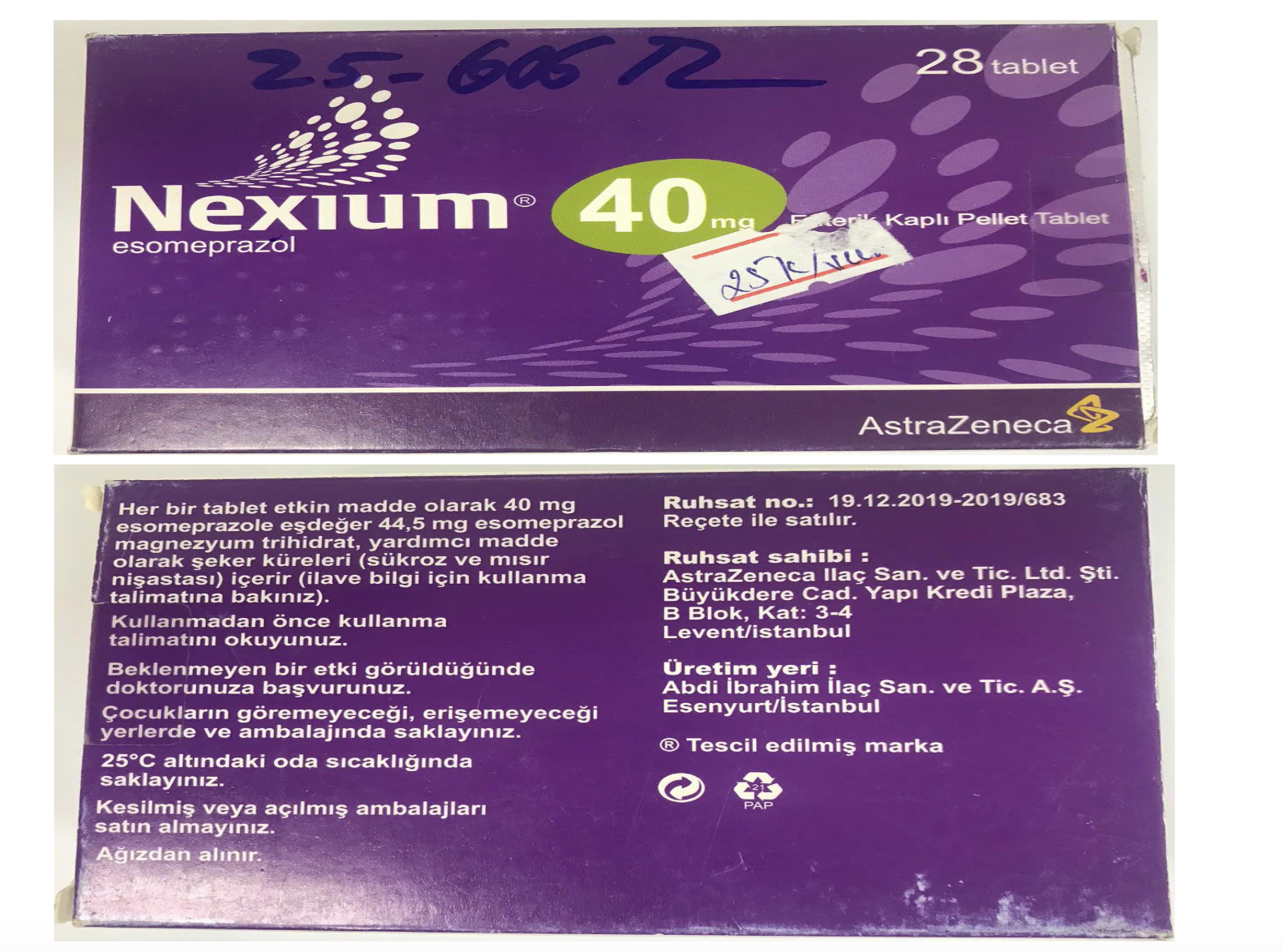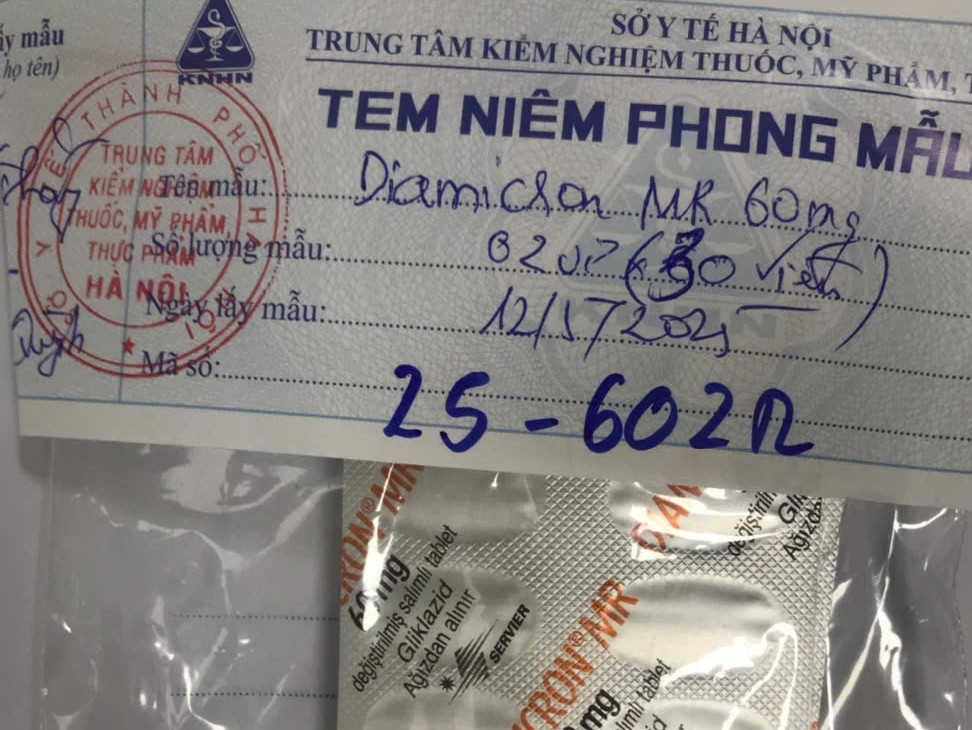Two pharmacies in Hanoi were recently discovered selling counterfeit drugs containing only 6.3% to 17.2% of the active ingredients stated on their packaging, raising serious public health concerns.


On May 12, the Hanoi Center for Drug, Cosmetic and Food Testing conducted routine quality checks at Duc Anh Pharmacy (under Duc Anh Medical Equipment and Pharmaceutical Co., Ltd.) in Dong Da District. Seven drug samples were collected, including medications for diabetes, cardiovascular issues, acid reflux, and flu prevention.
All seven lacked critical documentation such as registration numbers or import permits, and failed to list manufacturing or import information.
Among them, two were confirmed as counterfeit. The first, NEXIUM 40mg Enteric Coated Tablet (Esomeprazole), batch 23H420 (exp. 09/2027), tested with just 6.91 mg of Esomeprazole per tablet - only 17.27% of the labeled amount. The second, DIAMICRON® MR 60mg (Gliclazide), batch 23F603 (exp. 04/2026), contained only 42.5mg per tablet, about 70.83% of the listed dosage.
On May 8, authorities discovered another counterfeit at An An Pharmacy in Ha Dong District. The product, Theophylline Extended Release 200mg, batch 21127 (exp. 26/2/2026), labeled as manufactured by Pharmacy Laboratories Plus, lacked proper registration and labeling. Lab tests revealed it contained only 6.3% of the stated Theophylline content.
Where the challenges lie in drug quality management
Ta Manh Hung, Deputy Director of the Drug Administration of Vietnam, stated that in 2024 alone, over 43,000 drug, herbal, and cosmetic samples were tested nationwide. Of these, 228 failed quality standards, including 98 modern pharmaceuticals. Counterfeit drug detection rates remain low - between 0.04% and 0.06% of annual samples.
In 2024, 23 samples were suspected counterfeits. Eleven of these were traditional herbal medicines mislabeled and laced with modern pharmaceuticals like paracetamol or diclofenac. Suspected counterfeit modern drugs often involved cefixime, cefuroxime, mebendazole, salbutamol, and tetracycline.
Hung explained that inadequate compliance from retail pharmacies regarding storage, sourcing, and documentation facilitates the entry of counterfeit or substandard products into the legitimate supply chain. Additionally, the public’s tendency to self-medicate based on online advice or informal recommendations - especially from social media - further increases risk.
Six safety tips to avoid counterfeit medicine
The Drug Administration advises:
· Do not self-prescribe: Always consult a certified medical professional.
· Buy only from licensed pharmacies: Avoid grey-market or online purchases.
· Check packaging thoroughly: Look for intact seals, accurate labels, and Vietnamese subtitles on imports.
· Inspect the medication itself: Unusual appearance or markings should raise suspicion.
· Request a receipt: Proof of purchase helps trace the origin.
· Be wary of unusually low prices: Genuine products have consistent pricing. If it's too cheap, it's likely fake.
Vo Thu